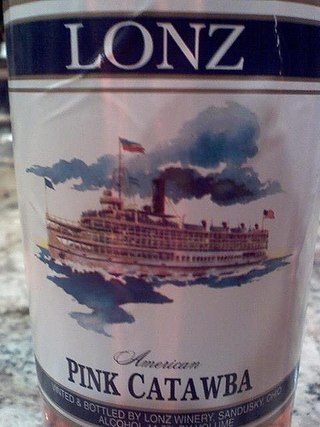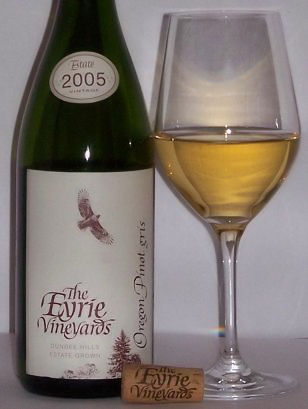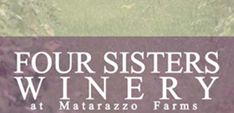
American cuisine consists of the cooking style and traditional dishes prepared in the United States of America. It has been significantly influenced by Europeans, indigenous Native Americans, Africans, Latin Americans, Asians, Pacific Islanders, and many other cultures and traditions. Principal influences on American cuisine are European, Native American, soul food, regional heritages including Cajun, Louisiana Creole, Pennsylvania Dutch, Mormon foodways, Texan, Tex-Mex, New Mexican, and Tlingit, and the cuisines of immigrant groups such as Chinese American, Italian American, Greek American and Mexican American. The large size of America and its long history of immigration have created an especially diverse cuisine that varies by region.

The Concord grape is a cultivar derived from the grape species Vitis labrusca that are used as table grapes, wine grapes and juice grapes. They are often used to make grape jelly, grape juice, grape pies, grape-flavored soft drinks, and candy. The grape is sometimes used to make wine, particularly sacramental and kosher wine. Traditionally, most commercially produced Concord wines have been finished sweet, but dry versions are possible if adequate fruit ripeness is achieved. The grape is named after the town in Massachusetts where it was developed.

Naples is a town in Ontario County, New York, United States. The population was 2,417 at the 2020 census.

A winery is a building or property that produces wine, or a business involved in the production of wine, such as a wine company. Some wine companies own many wineries. Besides wine making equipment, larger wineries may also feature warehouses, bottling lines, laboratories, and large expanses of tanks known as tank farms. Wineries may have existed as long as 8,000 years ago.

Welch Foods Inc., commonly known as Welch's, is an American company, headquartered in Concord, Massachusetts. It has been owned by the National Grape Cooperative Association, a co-op of grape growers, since 1956. Welch's is particularly known for its grape juices, jams and jellies made from dark Concord grapes and its white Niagara grape juice. The company also manufactures and markets an array of other products, including refrigerated juices, frozen and shelf-stable concentrates, organic grape juice, fruit snacks, and dried fruit. Welch's has also licensed its name for a line of grape-flavored soft drinks since 1974. Welch's grape and strawberry soda flavors are currently licensed to Global Beverage Corporation. Other popular products that use the Welch's name are the fruit snacks made by The Promotion In Motion Companies, Inc.

Catawba is a red American grape variety used for wine as well as juice, jams and jellies. The grape can have a pronounced musky or "foxy" flavor. Grown predominantly on the East Coast of the United States, this purplish-red grape is a likely cross of the native American Vitis labrusca and the Vitis vinifera cultivar Semillon. Its exact origins are unclear but it seems to have originated somewhere on the East coast from the Carolinas to Maryland.

Vidal blanc is a white hybrid grape variety produced from the Vitis vinifera variety Ugni blanc and another hybrid variety, Rayon d'Or. It is a very winter-hardy variety that manages to produce high sugar levels in cold climates with moderate to high acidity.

Italian–American cuisine is a style of Italian cuisine adapted throughout the United States. Italian–American food has been shaped throughout history by various waves of immigrants and their descendants, called Italian Americans.

Wine has been produced in the United States since the 1500s, with the first widespread production beginning in New Mexico in 1628. Today, wine production is undertaken in all fifty states, with California producing 84 percent of all US wine. The North American continent is home to several native species of grape, including Vitis labrusca, Vitis riparia, Vitis rotundifolia, and Vitis vulpina, but the wine-making industry is based almost entirely on the cultivation of the European Vitis vinifera, which was introduced by European settlers. With more than 1,100,000 acres (4,500 km2) under vine, the United States is the fourth-largest wine producing country in the world, after Italy, Spain, and France.

Michigan wine refers to any wine that is made in the state of Michigan in the United States. As of 2020, there were 3,375 acres (1,366 ha) under wine-grape cultivation and over 200 commercial wineries in Michigan, producing 3 million US gallons (11,000,000 L) of wine. According to another count there were 112 operating wineries in Michigan in 2007.

Nicholas Longworth was an American real estate speculator and winemaker as well as the founder of the Longworth family in Ohio. Longworth was an influential figure in the early history of American wine, producing sparkling Catawba wine from grapes grown in his Ohio River Valley vineyard. He also made significant contributions supporting the arts, impacting the careers of Robert S. Duncanson, Hiram Powers, and others.

Kyoho grapes are a fox grape (Concord-like) cross popular in East Asia. The fruits are blackish-purple, or almost black, with large seeds and juicy flesh with high sugar content and mild acidity. The variety was first produced by the Japanese viniculturist Yasushi Ohinoue in the 1930s and 1940s by crossing Ishiharawase and Centennial grape varieties. Kyoho is a tetraploid grape variety, as its breeding parents, ‘Ishiharawase’ and ‘Centennial’ are tetraploid bud sports of ‘Campbell Early’ and ‘Rosaki’, respectively. Like the Concord, Kyoho is a slip-skin variety, meaning that the skin is easily separated from the fruit. The seeds are bitter and the skin is not traditionally eaten. The grape maintains some of the flavor qualities of the Concord, known to consumers from the flavor of most grape jellies and Concord grape juice.

New York wine refers to wine made from grapes grown in the U.S. state of New York. New York ranks third in grape production by volume after California and Washington. 83% of New York's grape area is Vitis labrusca varieties. The rest is split almost equally between Vitis vinifera and French hybrids.

The Finger Lakes AVA is an American Viticultural Area located in Upstate New York, south of Lake Ontario. It was established in 1982 and encompasses the eleven Finger Lakes, but the area around Canandaigua, Keuka, Seneca, and Cayuga Lakes contain the vast majority of vineyard plantings in the AVA. Cayuga and Seneca Lakes each have their own American Viticultural Areas completely contained within the Finger Lakes AVA. The Finger Lakes AVA includes 11,000 acres (4,452 ha) of vineyards and is the largest wine-producing region in New York State.
Hunt Country Vineyards is a vineyard and winery located near Keuka Lake in the Finger Lakes AVA region of New York State, US.

Annual wine festivals celebrate viticulture and usually occur after the harvest of the grapes which, in the northern hemisphere, generally falls at the end of September and runs until well into October or later. They are common in most wine regions around the world and are to be considered in the tradition of other harvest festivals.

The Naples Grape Festival is an annual festival in Naples, New York, United States, dedicated to grapes. The town of Naples is in the center of Finger Lakes American Viticultural Area (AVA), a region known for grape-growing and wine making in the Finger Lakes area of Upstate New York. Around 80,000 people attend the festival each year.

Grape festivals are celebrated as a tradition in various parts of the world. Many double as harvest festivals and celebrate wine making and other foods and beverages made from grapes.

Four Sisters Winery at Matarazzo Farm is a winery in White Township in Warren County, New Jersey. A family produce farm since 1921, the vineyard was first planted in 1981, and opened to the public in 1984. It is the third oldest winery in New Jersey. Four Sisters has 8 acres of grapes under cultivation, and produces 5,000 cases of wine per year. The winery is so named because its owners have four daughters.

The cuisine of the Mid-Atlantic states encompasses the cuisines of the states of New York, New Jersey, Pennsylvania, Delaware, and Maryland, as well as Washington, D.C. The influences on cuisine in this region of the United States are extremely eclectic owing to the fact that it has been and continues to be a gateway for international culture as well as a gateway for new immigrants.

















